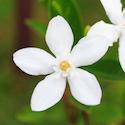Care and tips
These are all articles in the category Care and Tips

Powdery mildew is a common group of fungal species that infect a wide variety of plants, including our jasmine plants. The symptoms of this disease are not difficult to identify, as the first clinical signs of these infections are, circular and irregular white spots on the surface of the leaf, which quickly spreads its growth on both sides of the leaves, leading to those leaves to wilt. Usually, powdery mildew starts infecting the lower leaves of our jasmine plant and makes its way up to the upper tissues of the plant. Those leaves often appear twisted, distorted, with a dry look, covered with white powder and ultimately wilted. Powdery mildew infection thrives on dry and a bit damaged foliage, being particularly infective in high humidity, warm temperatures and in low light conditions. Powdery mildew infection is rarely fatal, although, if left unchecked, it can cause a nasty situation around your jasmine plant, that could compromise its integrity. Powdery mildew is caused by a variety of closely related fungal species belonging to the Erysiphaceae family. The most common species that comprise powdery mildew are, Golovinomyces cichoracearum, Erysiphe cichoracearum, Erysiphe polygoni, and Microsphaera penicillata, but, there are many more, compiling a total of 700 different powdery mildew fungal species. Powdery mildew fungi are obligated and biotrophic parasites, which require a living host to infect in order for it to grow and further reproduce.
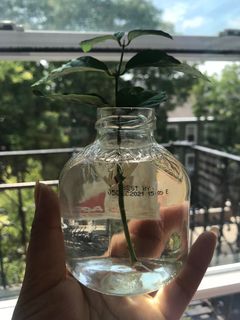
Cestrum nocturnum, aka, night blooming jasmine, belongs to the family of Solanaceae. It is also known as the nightshade or potato family of plants, mostly characterised by their intoxicating floral fragrance. Cestrum nocturnum is a sub-tropical vine, first discovered in the West Indies and named after its white or yellow, trumpet like flowers, which bloom at night and fill the air with an incredible scent. Night blooming jasmine grows in a highly invasive fashion once the growing and caring techniques are nailed down. Reason why, it is one of the most common choices for indoors decorative items and also outdoors for backyard, street isles and common urban areas. They can be pretty sensitive and delicate to care for in between seasons, such as, the winter or summer and often times people wonder how to propagate these plants.
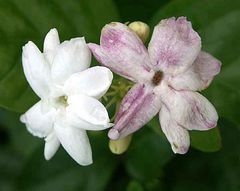
Arabian jasmine is most famous for its sweet and strong fragrance. It is a fast-growing climbing vine and shrub. Both its leaves are dark vibrant green and its flowers are creamy and waxy, compiling an exquisite plant for enjoyment, both indoors and outdoors. As we have learnt, growing these gorgeous plants, can be challenging at times, even-though you take special care, sometimes issues can still arise, such as, its flower turning purple. There are a few causes why our Sambac leaves are turning purple and we will dive into them and how to fix them in this post.
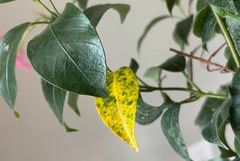
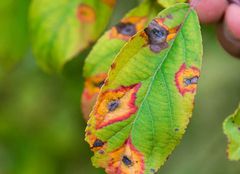
From indoor to outdoor gardens, one of the most common diseases that can spoil our summer thriving jasmines are fungi infections. Plant fungus is a common grief for all of us jasmine lovers, but don’t panic! as fungal diseases, although looking nasty, are not fatal to our jasmine plants. Below in this post, we will dive a bit deeper into the easy enough strategies to cope with these infections and treat them. Fungal infections primarily occur and develop in the leaves but some species also infect the flower buds and stems of the plant. Fungal pathogens are avid parasites, able to live for long periods of time in the soil, to then strike up on new plants and thriving during pruning periods to invade the plants.
